Crafting characters and universes is, put mildly, incredibly difficult. More difficult than threading a needle into a camel’s eye (such a small target and the hairy buggers keep objecting) or making pigs fly when the catapult is broken, it is nevertheless an essential part of storycraft. It can be done in hundreds of ways, big and small, and is often done in a clunky fashion, but sometimes done beautifully and well. And just occasionally you won’t even notice this artful crafting until one day when you’re having a bath, you stand suddenly and exclaim, ‘oh hey that’s funny.’ which is usually followed by ‘who left the window open, it’s a bit chilly in here?’
The Force Awakens has its fair share of such world building – and deliberately so. Set thirty years after the last installment, Return of the Jedi, and written specifically to harken back to the original films, Episode VII hides tiny nuggets of information in seemingly throwaway lines, imitating its predecessors which often did just that. I thought it would be nice to share one such part so that we could all go ‘oh that is quite funny’, and do so in a nitpicky fashion – because if years in the Star Wars fandom has taught me anything it’s that Star Wars fans love to nitpick (actually watching Star Wars comes a distant second). So as the saying goes, I’m here to nitpick and chew bubblegum, and baby, I’m all out of bu- oh wait I found a stick. Never mind.
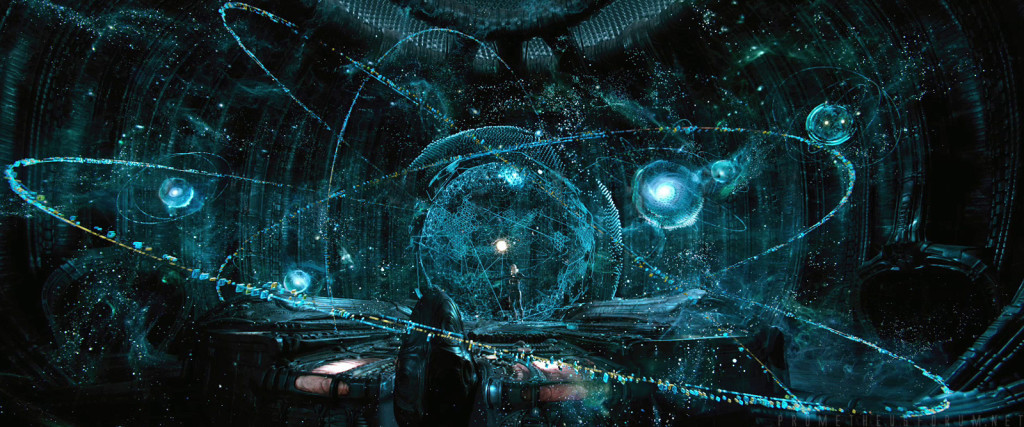
The Scene: 16 Crossing Paths (roughly 29 minutes in)
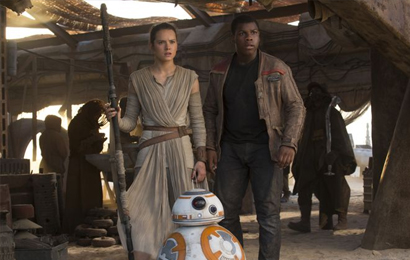
If your The Force Awakens copy is already set up to play (if not, why not?), please fast forward to the above mentioned scene. If you don’t feel like watching, here’s the necessary information: Rey and Finn meet. The end. Okay here’s some more: Finn ‘convinces’ Rey that he’s a member of the Resistence and that the beachball droid is important. And then this conversation takes place:
Rey: BB-8 says he’s on a secret mission, he has to get back to your base.
Finn: Apparently he has a map that leads to Luke Skywalker and everyone’s after it.
Rey: Luke Skywalker! I thought he was a myth.
BB-8 (Presumably): Could you guys draw me a bubble bath? Oh and some stormtroopers are here. We should leave, but bath first, ‘kay? #Priorities
At first glance I thought this was a simple allusion to the mythology of the Big Three – Han, Leia and Luke. In the same way that the Force is thought of as some hokey religion by Han in A New Hope – which itself takes place about twenty years after a time when the Jedi and the Force were prevalent in society – so too is Luke treated as some sort of made up entity. This idea changed when the novelization to the movie hit book shelves. In the book the above scene is presented from Finn’s point of view and, when Rey notes that she thought Luke was a myth, Finn’s internal monologue makes it clear that he knows quite well who Luke Skywalker is and what he did. More than that, he is quite surprised that Rey believes Luke to be a myth. ‘Backwater world’ may have been words thought by he.
Now, it’s a little bit iffy to turn to a book or other source for information that ought to be present in the film, so I went and watched the film again, in search for an answer. Truly I suffer so that you don’t have to. So let’s look to another scene, similar in tone to the above.
The Scene: 26 Chewie, We’re Home (roughly 41 minutes in)
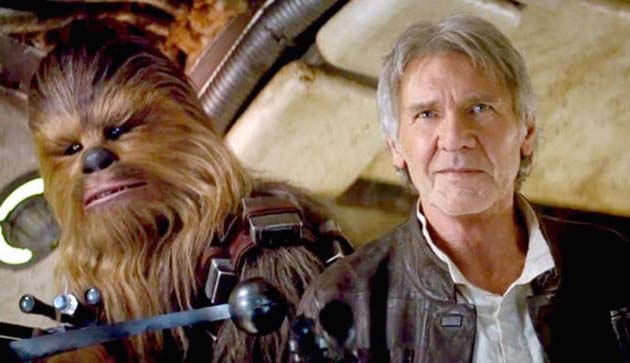
Again if you don’t wish to watch (which is fine, though you shall be shunned for eternity), Rey, Finn and BB-8 are escaping Jakku aboard the Falcon when Han and Chewie happen upon them. The two groups share a brief introduction:
Rey: This is the Millenium Falcon? You’re Han Solo!
Han: I used to be.
Finn: Han Solo, the Rebellion General?
Rey: No, the smuggler.
Finn: Wasn’t he a war hero?
Chewie (Presumably): Oh sure, he’s the war hero. Never mind that I fought in two galactic wars, freed my people, kept this hunk of junk in one piece and kept her fast enough to make the Kessel run in 14 parsecs and put up with that miserable git. But do I get a medal? I. Think. Not.
Rey: This is the ship that made the Kessel Run in 14 parsecs?
Han (indignant): TWELVE!
*Chewie sniggers to himself* (I’m guessing)
With these few throwaway lines it’s made clear that Finn once again knows more (sort of, I’ll get there) than Rey, backing up the assertion from the book, that Finn does actually know who that old bearded joker is.
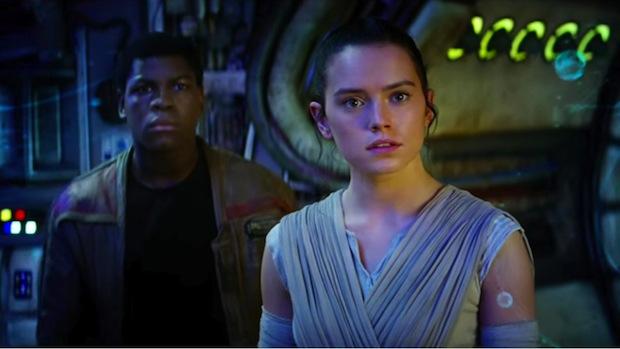
And this makes sense: as a member of the First Order of course Finn is going to know more about galactic political history. Even if it’s warped for ideological/propaganda reasons, it’s still entirely likely that widdle baby stormtwoopers would be taught about the terrible fall of the Empire and the rise of the hated New Republic, the death of their beloved dear leader, Sheev Palpatine, at the hands the Jedi, Luke Skywalker, the war ‘hero’, Han Solo, and … that politician one. Leia something.
Okay I’m being snarky without reason on that one, but since I’ve brought it up I’d like to note: since it’s never addressed by either Rey or Finn, we don’t really know what either know or don’t know about Leia. Because that’s the case I really have no grounds to be snarky about it. At a guess I’d say that Finn would at least know of her, whereas Rey would not, for reasons that I’ll get to. However it does feel like Leia’s getting short shrift in the film: she has not much impact on the story beyond getting Han to proffer a conciliatory hand to their son as well as being the general in charge of the Resistance – a role that could have been given to any random character, old or new.
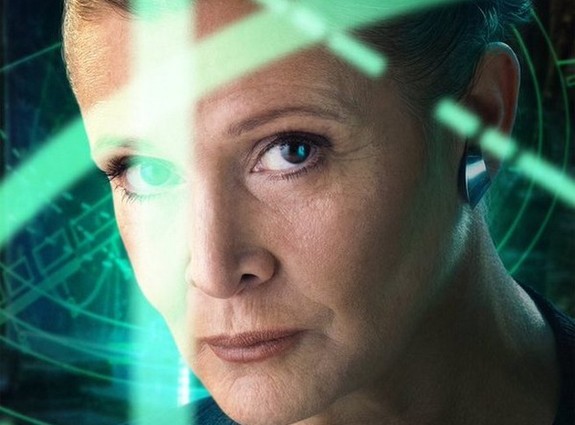
(That said, it’s good that she’s more than just a princess/diplomat and has a strong political role. I just wish that she had a larger role and one that isn’t comparable to a secondary character in the original trilogy.)
Where was I? Ah, yes. Whereas Finn would have a good or at least passable knowledge of the Force, Luke, Han and maybe Leia, Rey would reasonably only have good knowledge of Han – and that’s because they operate in the same universe: the mechanic’s universe. Look at that exchange again: she knows of Han solely as the smuggler because that’s the culture in which she’s been raised, one that puts more value on ships and the parts therein than the actual beings that flew them. Certainly more emphasis on gadgets than on some galaxy altering war which, in her corner of the galaxy, doesn’t actually mean much, and what alterations this war did have on Jakku happened briefly and before she was born. That one battle, as far as we know, is the one and only time that events of consequence have reached Jakku so it seems reasonable that Rey would have little to no knowledge of Han as some war hero, or even as Leia as a war hero, too, or politician.
If I may stop again: that’s an explanation for (seemingly) why things are, but it feels a bit too much like apologia for the film dropping the ball. I’m going to leave that in because it does explain Rey’s lack of knowledge of Han Solo as a war hero, but I wish to make it clear that if a book/comic/film doesn’t explain something adequately or fails in some other way, we should first try to accept that, yes, this is a thing they messed up – rather than quickly try to explain it away. Without that first step we’re merely hiding the problem – and that doesn’t help in the endeavor of addressing and fixing it.
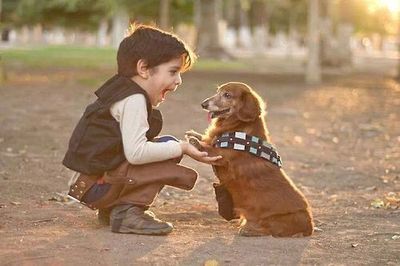
To return to the previous point: certainly there’s more emphasis on gadgets than a galactic war, and so too would there be more emphasis on this than on some wishy washy nonsense that is the Force. This makes sense both in and out of universe. Out of universe because it utilizes the hero’s journey narrative pattern as a means of grounding something so unknown and intangible as the Force. Put another way, by having Rey be some every-woman mechanic – something we can relate to in the real world – and by using the time-worn story structure, that thing we know well, it acts as a sort of stepping stone so that we may have a basic understanding of the mythology of the Star Wars universe.
And it makes sense in-universe because, well, the Force truly is a mythology to them. Aside from Luke and his select few (which has become even fewer thanks to Kylo-Ben), no one has a large breadth of understanding of the intricacies of the Force, and probably haven’t known it so well as the Old Jedi Order of the prequel trilogy era (thanks to another Skywalker).
So what does this all mean? Put bluntly: very little. There are no real, earth shattering bombshells to be had here. But it does present a good example of how to do story telling well. Movies have very little time to present their universe, their story and characters; they are little more than a snapshot compared to, say, a book or a video game or even a comic book. Filmmakers have to invest as much information as they can into ever scene, every bit of dialogue. Say what you like about the film (and we have, so very much), but I can’t help but admire how the filmmakers rarely wasted a scene to provide depth to the universe and the characters within it.
Author: Michael Dare
Michael Dare is a writer, lives in the UK, and has been slowly coming to terms with the realization that he is not Sherlock, but Watson. He loves Star Wars, dislikes blue milk. Enjoys jumping sharks. Survives on the tears of sexist men, and cheeseburgers.
